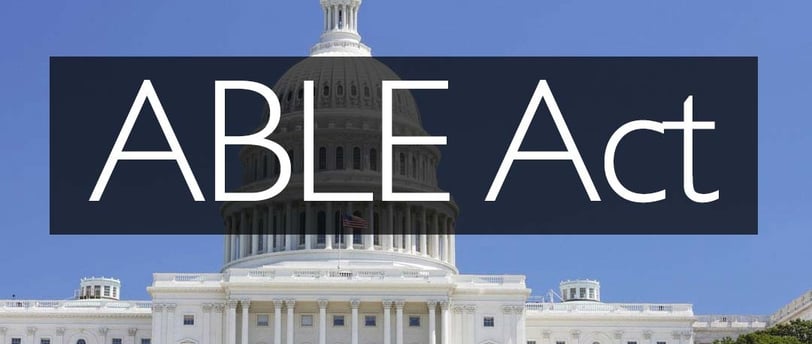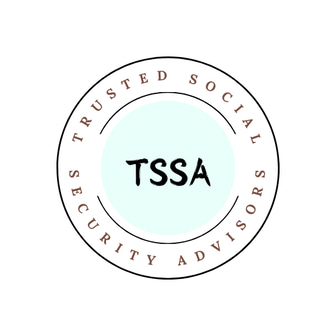SPOTLIGHT ON ACHIEVING A BETTER LIFE EXPERIENCE (ABLE) ACCOUNTS -- 2024 Edition
Information about tax-free savings accounts for disabled individuals
SSI/SSDISOCIAL SECURITY
8/28/20244 min read


INFORMATION ABOUT TAX-FREE SAVING ACCOUNTS FOR DISABLED INDIVIDUALS
The Stephen Beck, Jr., Achieving a Better Life Experience Act (ABLE) became law on December 19, 2014. The law aims to ease financial strains faced by individuals with disabilities by making tax-free saving accounts available to cover qualified disability expenses.
IMPORTANT FACTS TO KNOW ABOUT THE ABLE ACT
The designated beneficiary of an ABLE account is the eligible individual who owns the ABLE account. They must be:
receiving Supplemental Security Income (SSI) based on blindness or disability that began before age 26;
in SSI suspense due solely to excess income or resources but otherwise eligible for SSI based on blindness or disability that began before age 26;
receiving disability insurance benefits (DIB), childhood disability benefits (CDB), or widow’s with disabilities or widower’s benefits (DWB) based on blindness or disability that began before age 26; or
the subject of a disability certification.
A disability certification, to be signed by the individual or someone else establishing the ABLE account for the individual:
Certifies that the individual is blind or has a physical or mental impairment that results in marked and severe functional limitations and that such blindness or disability began before age 26;
Includes a certification that the individual has a copy of the diagnosis relating to their relevant impairment(s), signed by a physician.
Conditions on SSA’s “List of Compassionate Allowances Conditions” are deemed to meet the requirements for filing a disability certification if the condition was present and produced marked and severe functional limitations before the individual attained age 26.
An eligible individual may have only one ABLE account.
A contribution is the deposit of funds into an ABLE account. Any person may contribute to an ABLE account for an eligible beneficiary. Typically, contributions for an ABLE account may not exceed the annual gift tax exemption ($18,000 in 2024). However, if the beneficiary is working, and they or their employer are not making certain retirement plan contributions, the beneficiary may contribute an additional amount equal to the lesser of their annual compensation or the individual Federal Poverty Level for a one-person household in their state of residence for the prior calendar year (which for 2023, would be $13,590 in the continental US, $16,990 in Alaska, and $15,630 in Hawaii). For 2024 the additional amounts are $14,580 in the continental US, $18,210 in Alaska, and $16,770 in Hawaii.
A distribution is the withdrawal from an ABLE account. Distributions are only to or for the benefit of the designated beneficiary.
A person with signature authority can establish and control an ABLE account for a designated beneficiary who is a minor child or is otherwise incapable of managing the account.
A representative payee with signature authority may place benefits into an ABLE account when they determine that it is in the beneficiary’s best interest. Representative payees who choose to place benefits in an ABLE account must follow our general payee rules for managing benefits. There are no exceptions to our payee rules for ABLE accounts.
Qualified disability expenses (QDE) are expenses made for the benefit of the designated beneficiary and related to their disability, including, but not limited to:
Education;
Housing;
Transportation;
Employment training and support;
Assistive technology and related services;
Health;
Prevention and wellness;
Financial management and administrative services;
Legal fees;
Expenses for ABLE account oversight and monitoring;
Funeral and burial; and,
Basic living expenses.
A rollover is one the following:
The distribution of all or some of the funds from one ABLE account to the ABLE account of the designated beneficiary or a member of their family; or
A limited amount from a qualified tuition plan (also called a 529 plan) to the SSI applicant, recipient, or deemor’s ABLE account.
A program-to-program transfer is:
the entire balance of an ABLE account into an ABLE account of the same designated beneficiary in which the first ABLE account is closed upon the transfer of the funds; or
part or all of the balance to an ABLE account of an eligible individual who is a member of the family of the designated beneficiary.
TREATMENT OF ABLE UNDER FEDERAL MEANS-TESTED PROGRAMS
SSI Program
We disregard the first $100,000. Only assets above $100,000 count as a resource. If an ABLE balance exceeds $100,000 by an amount that causes you to exceed the SSI resource limit -- whether alone or with other resources, we suspend the SSI payment until the countable resources are below the allowable limit.
Medicaid Program
A beneficiary's Medicaid continues when an SSI recipient's ABLE account exceeds $100,000 by an amount that causes the recipient to exceed the SSI resource limit--whether alone or with other resources. The recipient retains eligibility for Medical Assistance (Medicaid) without a time limit as long as he or she remains otherwise eligible. If ABLE resources above $100,000 cause an individual to exceed the resource limit, then Medicaid continues uninterrupted. If non-ABLE resources over $100,000 cause an individual to exceed the resource limit, Medicaid is suspended.
Medicaid Payback Provision
A portion or all of the balance remaining in the ABLE account of a deceased designated beneficiary must be distributed to a State that files a claim against the designated beneficiary or the ABLE account itself with respect to benefits provided to the designated beneficiary under that State's Medicaid plan. The payment of such claim (if any) will be made only after providing for the payment from the designated beneficiary's ABLE account of the designated beneficiary's funeral and burial expenses and all outstanding payments due for their other qualified disability expenses, and will be limited to the amount of the total medical assistance paid for the designated beneficiary after the establishment of the ABLE account over the amount of any premiums paid, whether from the ABLE account or otherwise by or on behalf of the designated beneficiary, to a Medicaid Buy-In program. After the expiration of the applicable statute of limitations for filing Medicaid claims against the designated beneficiary's estate, a qualified ABLE program may distribute the balance of the ABLE account to the successor designated beneficiary or, if none, to the deceased designated beneficiary's estate. Some States have taken steps to limit payback. See state plan disclosure documents for specific details.


